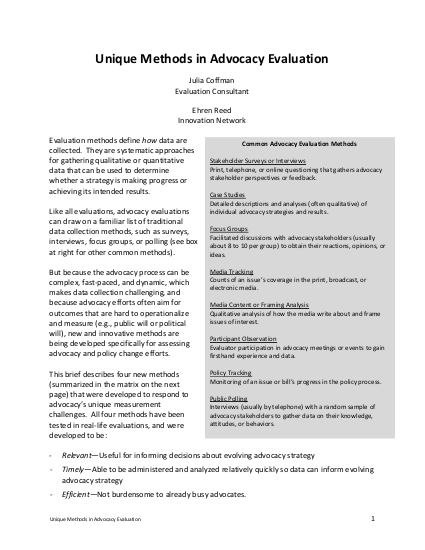
Evaluation methods define how data are collected. They are systematic approaches for gathering qualitative or quantitative data that can be used to determine whether a strategy is making progress or achieving its intended results.
Like all evaluations, advocacy evaluations can draw on a familiar list of traditional data collection methods, such as surveys, interviews, focus groups, or polling (see box at right for other common methods). But because the advocacy process can be complex, fast-paced, and dynamic, which makes data collection challenging, and because advocacy efforts often aim for outcomes that are hard to operationalize and measure (e.g., public will or political will), new and innovative methods are being developed specifically for assessing advocacy and policy change efforts.
This brief describes four new methods (summarized in the matrix on the next page) that were developed to respond to advocacy’s unique measurement challenges. All four methods have been tested in real-life evaluations, and were developed to be: - Relevant—Useful for informing decisions about evolving advocacy strategy - Timely—Able to be administered and analyzed relatively quickly so data can inform evolving advocacy strategy - Efficient—Not burdensome to already busy advocates.